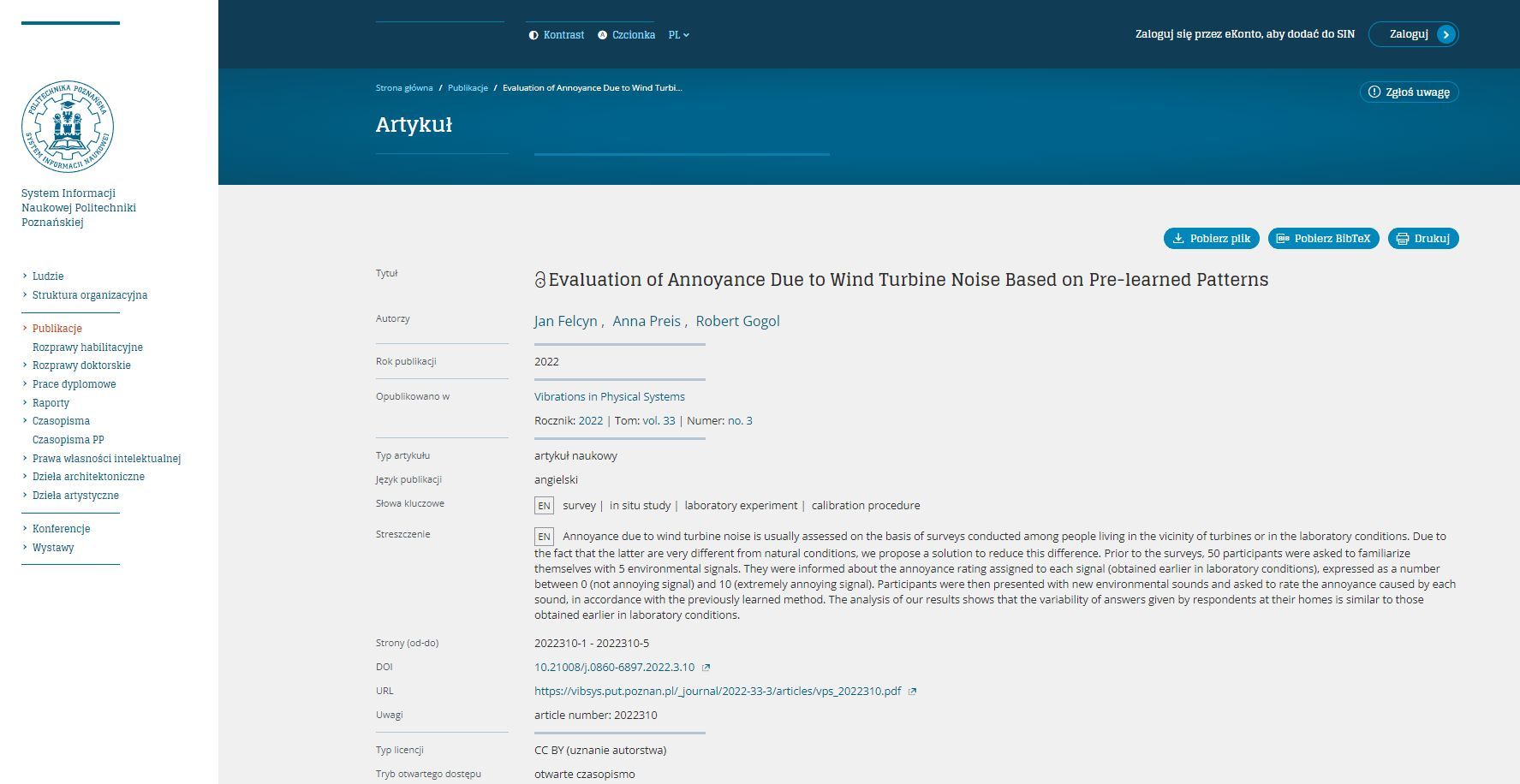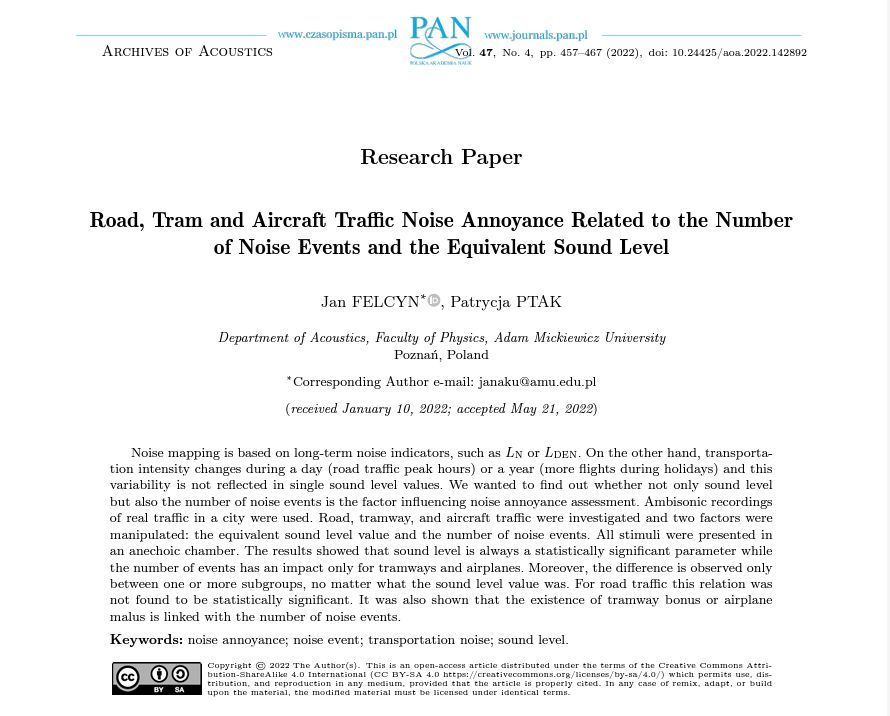5- Evaluation of Annoyance Due to Wind Turbine Noise Based on Pre-learned Patterns
Annoyance due to wind turbine noise is usually assessed on the basis of surveys conducted among people living in the vicinity of turbines or in the laboratory conditions. Due to the fact that the latter are very different from natural conditions, we propose a solution to reduce this difference. Prior to the surveys, 50 participants were asked to familiarize themselves with 5 environmental signals. They were informed about the annoyance rating assigned to each signal (obtained earlier in laboratory conditions), expressed as a number between 0 (not annoying signal) and 10 (extremely annoying signal). Participants were then presented with new environmental sounds and asked to rate the annoyance caused by each sound, in accordance with the previously learned method. The analysis of our results shows that the variability of answers given by respondents at their homes is similar to those obtained earlier in laboratory conditions.

